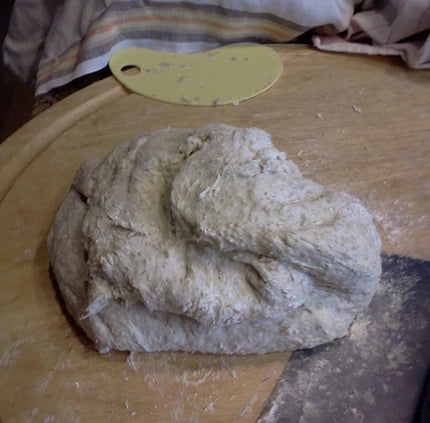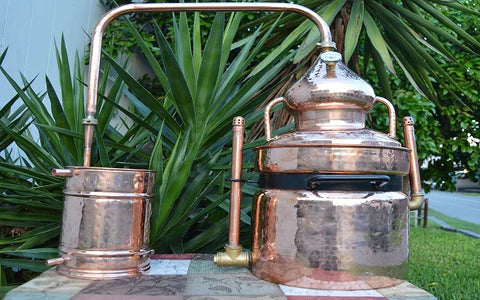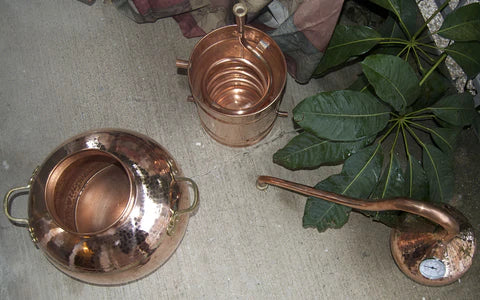Distilling alcohol can be fun, but it can also be dangerous. One of the most important considerations to make is that when you heat alcohol, you deal with flammable alcohol vapors. In addition to making your distilling environment unsafe, these alcohol vapors are what condense back into the moonshine or whiskey you have so-painstakingly been producing. So, it’s essential that these vapors don’t escape from your still during the distilling process.
The main way that distillers lose these vapors is through leaks at the seams between the parts of a still. If the onion head is not properly sealed to the pot or to the column, alcohol vapor will escape. Luckily, it is easy to seal these seams using common household ingredients: flour and water.
Flour Paste Recipe
There are many different recipes for flour paste that can be used to seal the seams of a still. Some distillers claim that store-bought dough will work just as well as the paste you make yourself at home, but opinions vary.
Rye flour holds moisture differently than wheat flour, and is a tried-and-true ingredient in most flour paste recipes. However, if you don’t have rye flour available and you’re going to try using wheat flour, that’s fine. You can also try adding a small amount of oatmeal to the wheat flour paste to achieve a thicker texture and better seal.
You will need:
- ¾ cup of rye flour
- ¼ cup of water
Mix the water into the flour until the texture begins to resume window putty. You don’t want it too flaky or too tacky, so continue mixing until the paste is moldable into different shapes. Roll the putty into long strips, like snakes, and use them to seal the seam between the onion head and the pot, as well as along the condenser coil if need be. You can apply several layers if you need to.
Applying the Flour Paste
Place the flour paste on the copper still as it is heating. Generally, applying it before the temperature reaches 100 degrees Fahrenheit is ideal. The paste will harden as the copper heats, but it should retain moisture on the inside of the still, causing an insulating effect. Don’t worry if some of the flour paste goes inside the still’s seam - it shouldn't affect the taste or quality of your final distillate.
After running your still, allow all the copper to cool before disassembling and cleaning it. Your dried flour paste should easily flake off the copper still, but use a mild soap and water mix on a sponge or washcloth to remove all residue.
If you make more flour paste mix than you need to seal your still for this moonshine run, keep the remainder in an air-tight container in the refrigerator. It may dry out slightly, but adding some water and re-mixing it before your next run should bring it back to life. Unused flour paste can be stored for approximately 30 days, but always follow any recommendations on the packaging.
Making a flour paste to use in distilling is a simple, but important, part of running a safe and efficient moonshine still. With common ingredients and a little elbow grease, you will run your still at ideal conditions.
Photo by: Shawn



